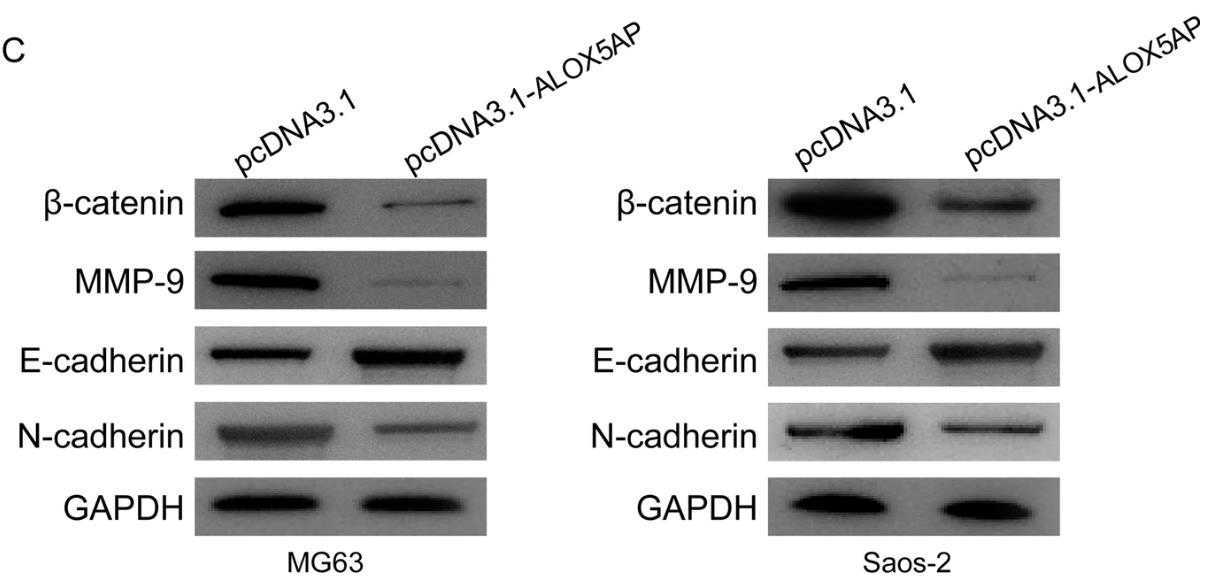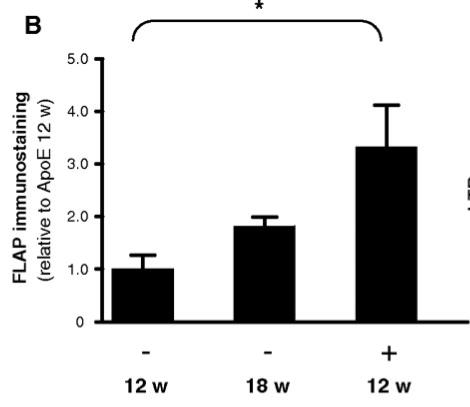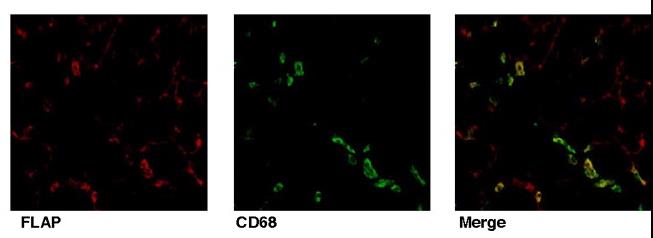Recombinant Human ALOX5AP protein(Met1-Pro161), His-tagged
| Cat.No. : | ALOX5AP-3336H |
| Product Overview : | Recombinant full length of Human ALOX5AP (NP_001620.2) (Met 1-Pro 161) was expressed in Insect Cells, fused with a polyhistidine tag at the carboxy-terminus. |
| Availability | December 15, 2025 |
| Unit | |
| Price | |
| Qty |
- Specification
- Gene Information
- Related Products
- Case Study
- Application
- Download
| Species : | Human |
| Source : | Insect Cells |
| Tag : | His |
| Protein Length : | Met1-Pro161 |
| Form : | Lyophilized from sterile 20mM Tris, 150mM NaCl, 10% gly, pH 7.4, 0.5% triton, 5mM DTT Normally 5 % - 8 % trehalose, mannitol and 0.01% Tween80 are added as protectants before lyophilization. |
| Molecular Mass : | The recombinant human ALOX5AP consists of 167 amino acids and predicts a molecular mass of 19 kDa as estimated in SDS-PAGE under reducing conditions. |
| Endotoxin : | < 1.0 EU per μg of the protein as determined by the LAL method. |
| Purity : | > 90 % as determined by SDS-PAGE |
| Storage : | Samples are stable for up to twelve months from date of receipt at -20°C to -80°C. Store it under sterile conditions at -20°C to -80°C. It is recommended that the protein be aliquoted for optimal storage. Avoid repeated freeze-thaw cycles. |
| Reconstitution : | It is recommended that sterile water be added to the vial to prepare a stock solution of 0.2 ug/ul. Centrifuge the vial at 4°C before opening to recover the entire contents. |
| Gene Name | ALOX5AP arachidonate 5-lipoxygenase-activating protein [ Homo sapiens ] |
| Official Symbol | ALOX5AP |
| Synonyms | ALOX5AP; arachidonate 5-lipoxygenase-activating protein; five lipoxygenase activating protein; FLAP; MK 886 binding protein; MK-886-binding protein; |
| Gene ID | 241 |
| mRNA Refseq | NM_001204406 |
| Protein Refseq | NP_001191335 |
| MIM | 603700 |
| UniProt ID | P20292 |
| ◆ Recombinant Proteins | ||
| ALOX5AP-5393C | Recombinant Chicken ALOX5AP | +Inquiry |
| Alox5ap-3611M | Recombinant Mouse Alox5ap, His-tagged | +Inquiry |
| ALOX5AP-1482HF | Recombinant Full Length Human ALOX5AP Protein, GST-tagged | +Inquiry |
| RFL-7257MF | Recombinant Full Length Macaca Fascicularis Arachidonate 5-Lipoxygenase-Activating Protein(Alox5Ap) Protein, His-Tagged | +Inquiry |
| ALOX5AP-295R | Recombinant Rat ALOX5AP Protein, His (Fc)-Avi-tagged | +Inquiry |
| ◆ Cell & Tissue Lysates | ||
| ALOX5AP-667HCL | Recombinant Human ALOX5AP cell lysate | +Inquiry |
Case 1: Han GD, et al. J Orthop Surg Res. 2023
Osteosarcoma (OS) is a major cancer affecting kids and teens. How immune cells interact with the tumor seems to impact how long patients live, so this study looked for markers that clue us into this immune-tumor interaction in OS. Researchers compared 34 OS patients who had metastases within 5 years to 19 who didn't, looking for different gene expressions. They used LASSO regression and SVM-RFE analysis to zero in on biomarkers, focusing on 22 types of immune cells using CIBERSORT. They found 33 genes with lower activity than usual, and spotlighted six key genes: ALOX5AP, HLA-DOA, HLA-DMA, HLA-DRB4, HCLS1, and LOC647450, with solid diagnostic potential (AUC > 0.7). Particularly, they noticed lower ALOX5AP levels in OS samples and cell lines, where higher ALOX5AP levels related to more advanced stages and better survival rates. It turns out that boosting ALOX5AP considerably hampers OS cell growth, spread, and invasion by affecting the Wnt/β-catenin signaling pathways.

Fig1. The association between ALOX5AP expression and different clinical factors are shown using heat map.

Fig2. After ALOX5AP overexpression, western blot analysis was used to examine the protein's levels.
Case 2: Bäck M, et al. Circ Res. 2007
TGF-beta is a key player in reducing inflammation in atherosclerosis. In a study with genetically modified ApoE(-/-) mice carrying a receptor that blocks TGF-beta effects in certain T cells, researchers found increased severity in atherosclerosis. They aimed to find out why this was happening. By looking at gene activity, they noticed that the 5-lipoxygenase-activating protein (FLAP) was significantly more active in both the aorta and fat tissue of these modified mice compared to regular ones. This was backed up by further tests, showing that these modified mice produced more leukotriene B(4), a molecule involved in inflammation. FLAP was seen in macrophages but not in T cells. Treatment with the FLAP inhibitor MK-886 reduced lesion size and T-cell presence. Additionally, obese mice had much higher levels of FLAP in their fat tissue.

Fig1. Immunohistochemical quantification of FLAP expression.

Fig2. Immunohistochemical fluorescent labeling of FLAP protein in adipose tissue.
ALOX5AP, also known as 5-lipoxygenase activating protein (FLAP), is super important for making leukotrienes, which are like the main culprits behind inflammation. This protein is a big deal in how our bodies handle inflammation and immune responses and is linked to problems like asthma and heart issues. By really getting into the nitty-gritty of how ALOX5AP functions, researchers hope to figure out what triggers these health problems and, fingers crossed, come up with new ways to treat them.
When it comes to recombinant human ALOX5AP protein, its uses span both research and industrial domains. In labs, researchers use it to investigate how leukotrienes are produced and how they affect inflammation and the progression of diseases. On the industrial front, this protein is key in developing medications aimed at adjusting leukotriene pathways to tackle inflammatory diseases like asthma. As we continue to explore its functions, the goal is to craft more precise treatments that can ease diseases related to inflammation.
Not For Human Consumption!
Inquiry
- Reviews (0)
- Q&As (0)
Ask a Question for All ALOX5AP Products
Required fields are marked with *
My Review for All ALOX5AP Products
Required fields are marked with *



